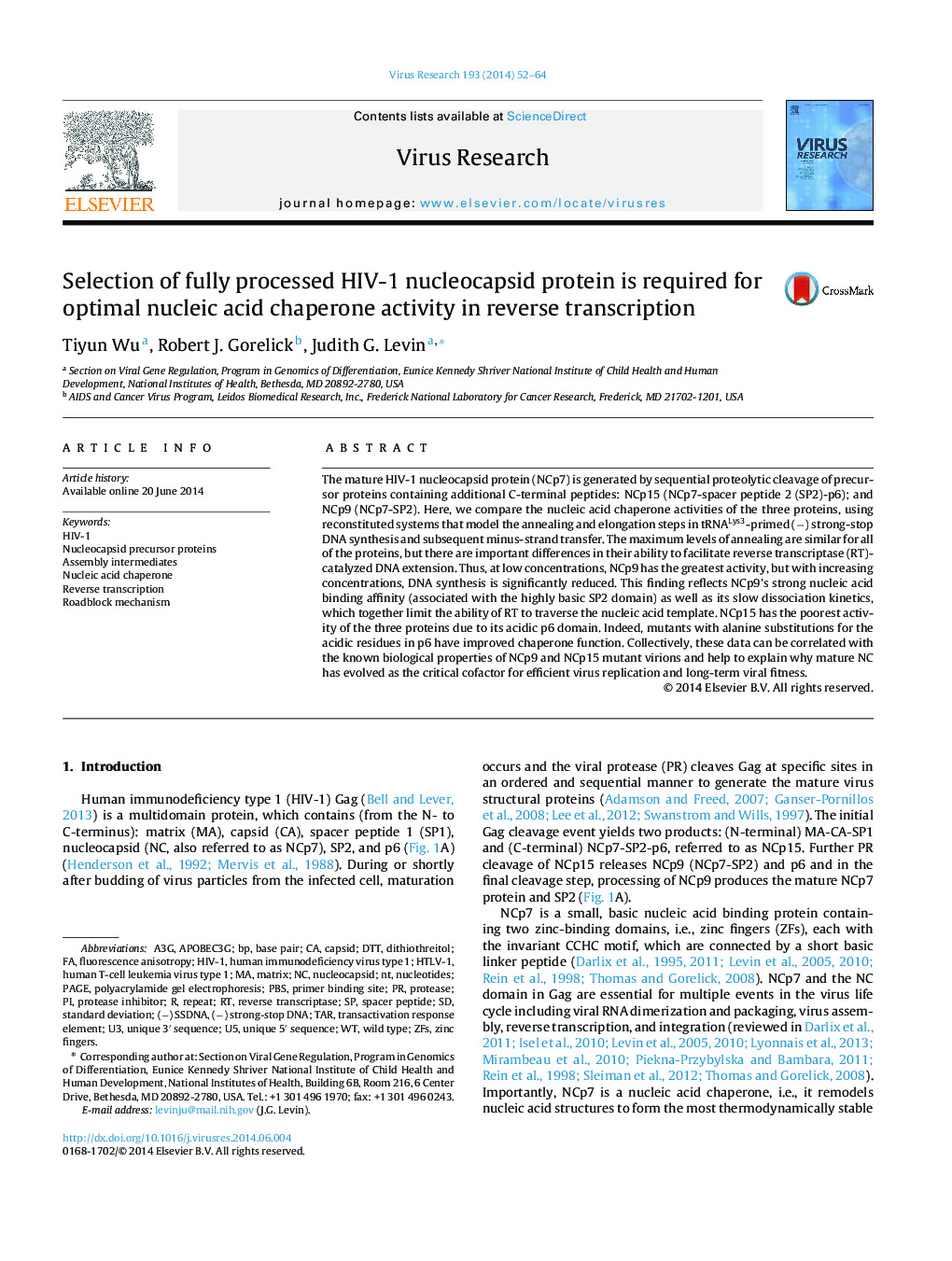| کد مقاله | کد نشریه | سال انتشار | مقاله انگلیسی | نسخه تمام متن |
|---|---|---|---|---|
| 6142322 | 1594364 | 2014 | 13 صفحه PDF | دانلود رایگان |
عنوان انگلیسی مقاله ISI
Selection of fully processed HIV-1 nucleocapsid protein is required for optimal nucleic acid chaperone activity in reverse transcription
دانلود مقاله + سفارش ترجمه
دانلود مقاله ISI انگلیسی
رایگان برای ایرانیان
کلمات کلیدی
PBStransactivation response elementZFSDTTA3GPAGEnucleocapsidHTLV-1APOBEC3G(−) SSDNANucleic acid chaperone - اسید نوکلئیکpolyacrylamide gel electrophoresis - الکتروفورز ژل پلی آکریل آمیدstandard deviation - انحراف معیارZinc fingers - انگشت رویFluorescence anisotropy - بی خوابی فلورسانسیTar - تارReverse transcriptase - ترانس کریپتاز معکوس یا وارونویسRepeat - تکرارbase pair - جفت پایهdithiothreitol - دیتیوتریتولreverse transcription - رونویسی معکوسPrimer binding site - سایت پیوند اولیهMatrix - ماتریکسProtease inhibitor - مهارکننده پروتئازwild type - نوع وحشیNucleotides - نوکلئوتیدHIV-1 - ویروس اچ آی وی نوع یکHuman T-cell leukemia virus type 1 - ویروس تیروئید T نوع سلول T نوع 1Human immunodeficiency virus type 1 - ویروس نقص ایمنی بدن نوع 1Protease - پروتئازCapsid - کپسید
موضوعات مرتبط
علوم زیستی و بیوفناوری
ایمنی شناسی و میکروب شناسی
ویروس شناسی
پیش نمایش صفحه اول مقاله

چکیده انگلیسی
The mature HIV-1 nucleocapsid protein (NCp7) is generated by sequential proteolytic cleavage of precursor proteins containing additional C-terminal peptides: NCp15 (NCp7-spacer peptide 2 (SP2)-p6); and NCp9 (NCp7-SP2). Here, we compare the nucleic acid chaperone activities of the three proteins, using reconstituted systems that model the annealing and elongation steps in tRNALys3-primed (â) strong-stop DNA synthesis and subsequent minus-strand transfer. The maximum levels of annealing are similar for all of the proteins, but there are important differences in their ability to facilitate reverse transcriptase (RT)-catalyzed DNA extension. Thus, at low concentrations, NCp9 has the greatest activity, but with increasing concentrations, DNA synthesis is significantly reduced. This finding reflects NCp9's strong nucleic acid binding affinity (associated with the highly basic SP2 domain) as well as its slow dissociation kinetics, which together limit the ability of RT to traverse the nucleic acid template. NCp15 has the poorest activity of the three proteins due to its acidic p6 domain. Indeed, mutants with alanine substitutions for the acidic residues in p6 have improved chaperone function. Collectively, these data can be correlated with the known biological properties of NCp9 and NCp15 mutant virions and help to explain why mature NC has evolved as the critical cofactor for efficient virus replication and long-term viral fitness.
ناشر
Database: Elsevier - ScienceDirect (ساینس دایرکت)
Journal: Virus Research - Volume 193, 26 November 2014, Pages 52-64
Journal: Virus Research - Volume 193, 26 November 2014, Pages 52-64
نویسندگان
Tiyun Wu, Robert J. Gorelick, Judith G. Levin,